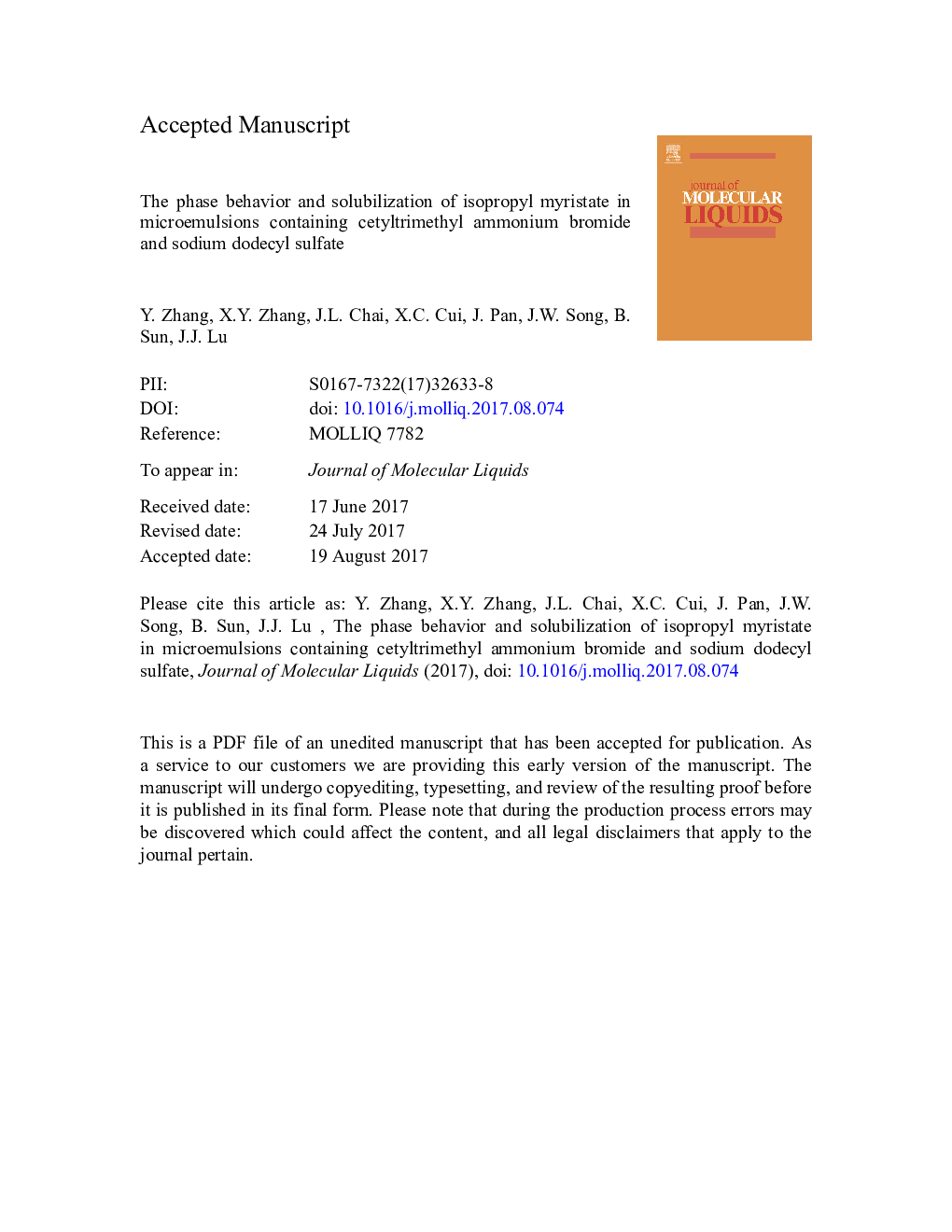| Article ID | Journal | Published Year | Pages | File Type |
|---|---|---|---|---|
| 5408254 | Journal of Molecular Liquids | 2017 | 27 Pages |
Abstract
The phase behavior and solubilization of isopropyl myristate in microemulsions containing CTAB-SDS/IPM/butan-1-ol/aqueous NaCl (w = 0.05) with different XSDS values (the molar fraction of SDS in CTAB and SDS mixture) were studied using the ε â β diagram method. The microemulsion systems containing mixed CTAB-SDS surfactants have lower alcohol solubility (SA) and lower mass fraction of the alcohol in the interfacial layer (AS), but higher solubilization ability (SP*) compared to the microemulsions containing single surfactant SDS and CTAB. At different oil-to-water ratios (α), CTAB and SDS in microemulsions display significant synergistic effect, and the order of magnitude for SP* values is CTAB-SDS > CTAB ~ SDS. As the value of α increases, the order of magnitude for SA and AS values for different microemulsions can be ranked as: CTAB-SDS < CTAB < SDS. However, the SP* value of the SDS-based microemulsions would decrease, the SP* value of the CTAB-based microemulsions would increase, and the SP* value of the CTAB-SDS-based microemulsions would increase at first, and remain constant thereafter. In microemulsion systems CTAB (SDS, CTAB-SDS)/butan-1-ol/oil/aqueous NaCl (w = 0.05), the SA values in different oil phases have the order of magnitude: IPM > dodecane > octane, while the order of magnitude for SP* values is octane > IPM > dodecane. IPM has solubilization ability between octane and dodecane. With increasing salinity of the microemulsions, the SP* values, especially SP* values of the CTAB-SDS microemulsion systems would increase observably.
Keywords
Related Topics
Physical Sciences and Engineering
Chemistry
Physical and Theoretical Chemistry
Authors
Y. Zhang, X.Y. Zhang, J.L. Chai, X.C. Cui, J. Pan, J.W. Song, B. Sun, J.J. Lu,
